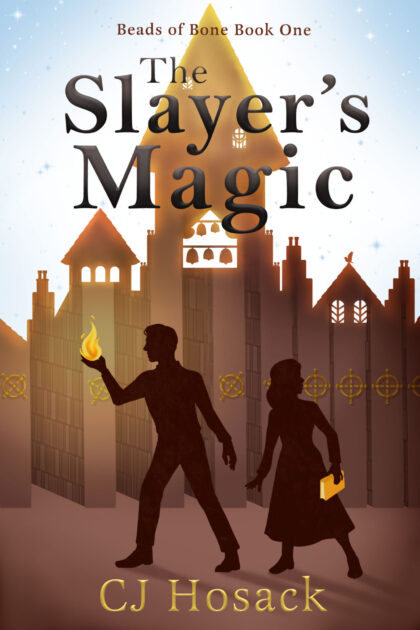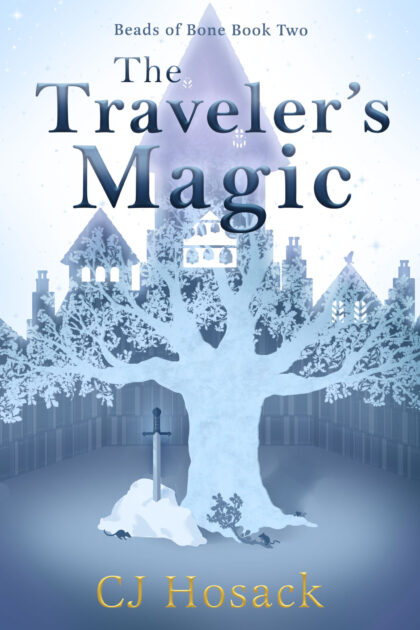 Welcome to the town of Waatch! It’s not on this planet, but where it resides in its world closely resembles Anacortes, Washington. It’s right there on the water, similar to the Puget Sound. In that world it’s not a sound, but definitely a mainland with islands nearby. So naturally the people of Waatch eat lots of fish and seafood. Ryn, whose story is in The Slayer’s Magic and The Traveler’s Magic, loves crab. She would prefer a nice plate of crab with some butter. But her best friend, Yll, is most fond of salmon salad sandwiches. If there’s salmon salad around, she will go straight to it. Especially if she’s been flying. Shapeshifting into a bird is hungry work. She prefers to be a cute robin redbreast, but has been known upon occasion to become an eagle. She could catch her own salmon that way, but she’s not into raw fish. There are lots of eateries that make salmon salad, but Yll’s favorite is The Tea Shop in Waatch.
Welcome to the town of Waatch! It’s not on this planet, but where it resides in its world closely resembles Anacortes, Washington. It’s right there on the water, similar to the Puget Sound. In that world it’s not a sound, but definitely a mainland with islands nearby. So naturally the people of Waatch eat lots of fish and seafood. Ryn, whose story is in The Slayer’s Magic and The Traveler’s Magic, loves crab. She would prefer a nice plate of crab with some butter. But her best friend, Yll, is most fond of salmon salad sandwiches. If there’s salmon salad around, she will go straight to it. Especially if she’s been flying. Shapeshifting into a bird is hungry work. She prefers to be a cute robin redbreast, but has been known upon occasion to become an eagle. She could catch her own salmon that way, but she’s not into raw fish. There are lots of eateries that make salmon salad, but Yll’s favorite is The Tea Shop in Waatch.
There’s something quaint, but audacious about the Waatch tea shop. In a town that is crammed with buildings circling the Great Ancestral Library, The Tea Shop is bold enough to be a picturesque cottage surrounded by an actual garden. The small, white picket fence out front becomes a trellised arched entry with entwined honeysuckle hanging from it. The garden is a haven for butterflies, which can often be seen from the cottage windows while dining. An abundance of Ryn’s favorite tea–chamomile flowers–grows fresh in the garden. The tea trays often contain cucumber sandwiches along with lots of sweets made from berries, but the one thing on the tray that draws the crowds is their salmon salad. Everyone in Waatch agrees The Tea Shop’s salmon salad is the best. It is popular with the Library worker lunch crowd. Lunchtime has been full capacity lately as Library docents and researchers gathered to gossip about the discovery of pests in the Library. The potential of the Library losing its magical protection is quite the scandal. Whispered gossip always goes well with tea and salmon salad!
Yll’s mother, curator of the Library, has been bringing Yll to The Tea Shop since she was a little girl. Recently, Ryn and Yll journeyed with a Library delegation to the island of Viatoro where they had salmon salad sandwiches in a seaside shop overlooking the bay of Viator, but their salmon salad didn’t have that one ingredient Yll loves. After much arm twisting, the highly secret recipe has been obtained. Can you guess what Yll’s favorite secret ingredient is?
 The Tea Room’s Salmon Salad
The Tea Room’s Salmon Salad
Ingredients:
3 to 5 ounces of Smoked Salmon
5 ounces Pink Salmon
2 stalks of Celery, chopped
2 Tbsp fresh Dill chopped
1 Green Onion, sliced
1 Tbsp chopped Shallot
1 Tbsp fresh squeezed Lemon Juice
¼ tsp Black Pepper
⅓ cup Mayonnaise
¼ Roasted Pine Nuts
Instructions:
Combine all ingredients in a bowl, mixing well until combined.
Layer the Salmon Salad on bread along with green leaf lettuce, and thinly sliced cucumber. Salmon Salad is also delicious wrapped in a butter lettuce leaf.
Aaaand the secret ingredient is–lemon juice! The town of Waatch and the Ancestral islands are in a temperate zone of their planet. Lemons don’t grow there. No one is quite sure how The Tea Room obtains them. Speculation ranges from a secret hot house, to someone with Travel magic and the ability to travel to another part of the world to obtain the lemons. That rumor seems fantastical, but no one really knows for sure, and the staff at The Tea Room are very tight lipped about it. It remains a mystery!
 CJ grew up in Southern California loving fantasy and science fiction. She is married to her husband of thirty plus years, has four children, and an ever growing number of grandchildren. Adopted at eight months old, she recently found her birth parents. She has a Masters Degree in Public History from Southern New Hampshire University, and if she’s not writing you can generally find her quilting, costuming, or traveling to spend time with those she loves. She’s a wannabe dress historian, and has worked with museums on historical dress recreation. The Slayer’s Magic and The Traveler’s Magic are the first two books in the The Beads of Bone series. You can find CJ at her website cjhosack.com and on Instagram and Threads @cj_hosack.
CJ grew up in Southern California loving fantasy and science fiction. She is married to her husband of thirty plus years, has four children, and an ever growing number of grandchildren. Adopted at eight months old, she recently found her birth parents. She has a Masters Degree in Public History from Southern New Hampshire University, and if she’s not writing you can generally find her quilting, costuming, or traveling to spend time with those she loves. She’s a wannabe dress historian, and has worked with museums on historical dress recreation. The Slayer’s Magic and The Traveler’s Magic are the first two books in the The Beads of Bone series. You can find CJ at her website cjhosack.com and on Instagram and Threads @cj_hosack.



 As someone who works deeply in the zoo/conservation industries and spends a lot of time pretending to be a tiger at conventions around the country, you might say I’m enthusiastic about animals.
As someone who works deeply in the zoo/conservation industries and spends a lot of time pretending to be a tiger at conventions around the country, you might say I’m enthusiastic about animals. Chelsea “Little Bean Tiger” Eckert (she/her) is a graduate of UNC Greensboro’s MFA program, as well as a zoo worker, furry, and fantasy fiction fan. A nonbinary writer, she happily babbles about queerness, anime chicks, and her love of binturongs to anyone who will listen. She’s proud to be the sometimes-haggard but always-cheery Communications Director of Atlanta’s MultiverseCon. You can find her either 1) at your local furry con running animal quiz shows, 2) spamming the Multiverse Slack with memes only she finds funny, or 3) on Twitter (@chelseayrbff).
Chelsea “Little Bean Tiger” Eckert (she/her) is a graduate of UNC Greensboro’s MFA program, as well as a zoo worker, furry, and fantasy fiction fan. A nonbinary writer, she happily babbles about queerness, anime chicks, and her love of binturongs to anyone who will listen. She’s proud to be the sometimes-haggard but always-cheery Communications Director of Atlanta’s MultiverseCon. You can find her either 1) at your local furry con running animal quiz shows, 2) spamming the Multiverse Slack with memes only she finds funny, or 3) on Twitter (@chelseayrbff).


One Response
I really enjoyed reading this article—it’s both engaging and
full of valuable insights. The website is a fantastic source of information.